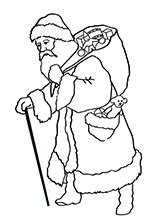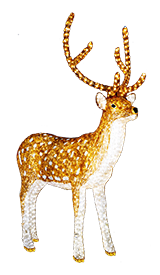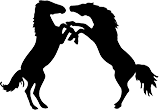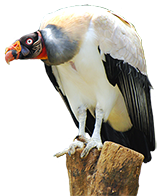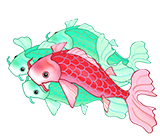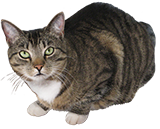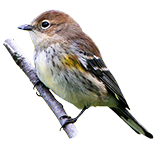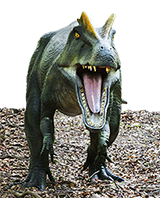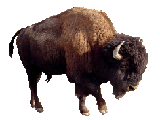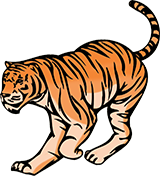Dinosaur Facts, Types of Dinosaurs
Learning dinosaur facts introduces people to a diverse and fascinating animal that lived millions of years ago when the Earth was a tropical, humid and green paradise conducive to the growth of these terrestrial vertebrates.
Ruling this
planet with their enormous bodies, sharp teeth, voracious appetites and small
brains for nearly 165 millions years, dinosaurs remain one of our most discussed
and researched prehistoric animals ever to have graced this planet.
Dinosaur fossils and the knowledge resulting from close examination of these fossils continue to be discovered every day, revealing the existence of both carnivorous and herbivorous dinosaurs long before man appeared. Some walked on two legs and were mostly bipedal, while others remained on four legs, choosing quadrupedal movement instead.
Different types of dinosaurs possessed unique, sometimes startling features, which are still seen on present-day reptilian ancestors of dinosaurs, strange traits such as enormous horns, sharp spines, bony armor and large crests on top of small heads.
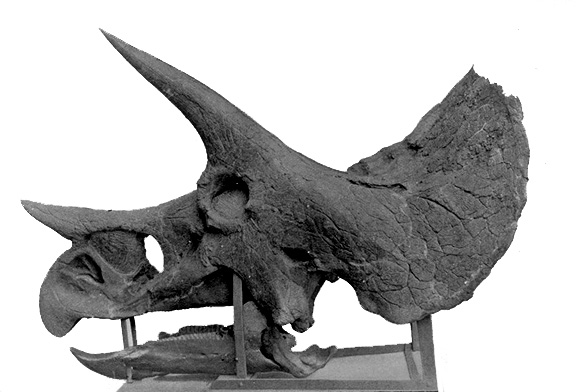
Dinosaur Facts About Dinosaur History
The history of dinosaurs begins during the Triassic Period, some 200 million years ago when the first dinosaurs appeared as small, rapidly moving creatures no more than 10 feet long. Types of dinosaurs living in this time include:
Coelophysis--An early dinosaur with a long neck, large eyes, protruding snout and a strong tail used to balance the body when running at high speeds. With jagged, curved teeth filling its mouth, coelophysis undoubtedly ate meat and may have been a pack hunter as well.
Erythrosuchus--This dinosaur lived primarily in South Africa and is considered the largest terrestrial predator existing during that time. Fossils indicate it grew to at least 16 feet long and possessed razor-sharp teeth. With strong legs to propel a formidable body, erythrosuchus resembled the later tyrannosaurus rex in both appearance and aggressive hunting style.
Efraasia--An herbivorous dinosaur living in Germany during the late Triassic period, dinosaur facts about efraasia include having unusually long, slender fingers with which to pull leaves off trees and plants from the ground. Walking upright with a maximum length of eight feet, this dinosaur probably ate ferns, conifers and horsetails, all plants that flourished in the Triassic.
Herrerasaurus--One of the earliest known dinosaurs living in the Triassic Period, herrerasaurus were predominantly carnivorous, small bipedal dinosaurs standing about three feet high with a long tail and tiny head. It probably caught and ate smaller herbivore dinosaurs but was also prey to larger carnivores living at that time. According to paleontologist examination of its teeth and anatomy, herrerasaurus not only ate meat but bone as well.
Jurassic Period Dinosaur Facts
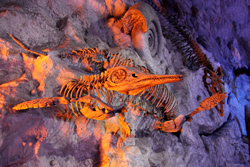 Famously referred to as the "Age of the Dinosaurs," the Jurassic
Period generated a more tropical and lush climate than the preceding
Triassic, producing the largest animals ever existing on Earth.
Famously referred to as the "Age of the Dinosaurs," the Jurassic
Period generated a more tropical and lush climate than the preceding
Triassic, producing the largest animals ever existing on Earth.
Impressive flying reptiles inhabited Jurassic skies as well,
eventually evolving into the first real birds. The types of dinosaurs that lived during this remarkable era flourishing
about 130 millions years ago include:
Plesiosaurs--First discovered in 1821, plesiosaurs were marine dinosaurs surviving in the Earth's oceans by using keen eyesight and an ability to utilize camouflage coloring underwater. Like sea turtles do today, plesiosaurs laid eggs in nests they constructed on sandy beaches. In addition, paleontologists believe that these dinosaurs swallowed food whole rather than chewing it first, somewhat in the manner that pelicans eat fish.
Brachiosaurus--At a whopping 80 to 85-feet long, brachiosaurus represents the largest land animal yet to be discovered. Because it was so large, researchers assume it had no predators, which is one reason so many fossils of this dinosaur have been found. As an herbivore, brachiosaurus ate off the tops of trees, swallowing its food whole, and may have traveled in small groups. Dinosaur facts about these giants include having a weight of 20 times more than African elephants and stood an average of 50-feet high. One mystery about this is the fact that even though it is highly doubtful it ever had to fight for its life due to its enormous size, its small feet had unusually large claws, a trait that puzzles paleontologists.
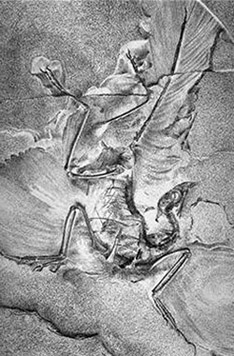 Archeopteryx - About 150 million years ago, a species of flying
dinosaur began to evolve into what we know as birds today.
Archeopteryx is considered an intermediate species of predatory
dinosaur and bird, is one of the most important fossil discoveries
of the 20th century. Scientists have not decided whether this animal
glided among the trees or actually flew like a bird. What they do
know is that archaeopteryx used wings possessing three claws each
and these wings possessed some sort of feathers similar to bird
feathers. However, it did not have a beak but had a scaled snout
instead with definitely reptilian teeth filling its large jaws.
Archeopteryx - About 150 million years ago, a species of flying
dinosaur began to evolve into what we know as birds today.
Archeopteryx is considered an intermediate species of predatory
dinosaur and bird, is one of the most important fossil discoveries
of the 20th century. Scientists have not decided whether this animal
glided among the trees or actually flew like a bird. What they do
know is that archaeopteryx used wings possessing three claws each
and these wings possessed some sort of feathers similar to bird
feathers. However, it did not have a beak but had a scaled snout
instead with definitely reptilian teeth filling its large jaws.
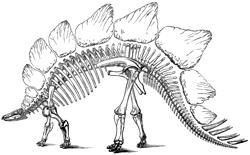 Stegosaurus - Dinosaur facts about stegosaurus, who resembled a
bony-plated tank on four short, stubby legs, is one of the most
recognized dinosaurs, next to the t rex dinosaur, brontosaurus and
the pteradactyl. With a tail bearing intimidating-looking spikes,
stegosaurus is thought to have been one of the least intelligent
dinosaurs, relying on its protective covering for defense from more
cunning predators. Its short neck indicates that it munched mostly
on shrubs, bushes and other low-lying plant life and avoided
competing for food with larger, treetop eating dinosaurs.
Stegosaurus - Dinosaur facts about stegosaurus, who resembled a
bony-plated tank on four short, stubby legs, is one of the most
recognized dinosaurs, next to the t rex dinosaur, brontosaurus and
the pteradactyl. With a tail bearing intimidating-looking spikes,
stegosaurus is thought to have been one of the least intelligent
dinosaurs, relying on its protective covering for defense from more
cunning predators. Its short neck indicates that it munched mostly
on shrubs, bushes and other low-lying plant life and avoided
competing for food with larger, treetop eating dinosaurs.
Ichthyosaur--Appearing to be a mix of dolphin and fish, the ichthyosaur first appeared during the Triassic Period as a result of terrestrial reptiles moving back into the oceans and seas. Averaging six to 13-feet in length and possessing a somewhat pointed snout, ichthyosaur's streamlined body was probably capable of attaining underwater speeds of 25-miles per hour, similar to the speed of dolphins. They were not fish, however, as they could breathe air and were fueled by a warm-blooded, endothermic metabolism enabling it to survive in cooler environments.
Cretaceous Period Dinosaur Facts
Part of the Mesozoic era, the Cretaceous Period presented Earth's history with more dinosaur species than the previous two periods.
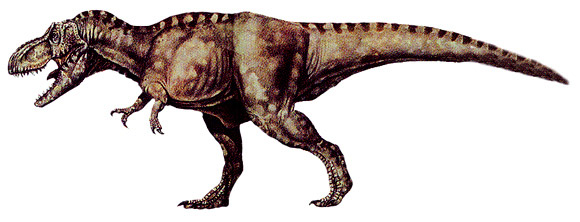
This was also the time when the planet was terrorized by the infamous T rex dinosaur, an aggressive and frightening bipedal carnivore known for its massive, strong jaws and rows of razor-sharp teeth.
Other dinosaur facts about Tyrannosaurus Rex are:
• T rex weighed between seven and eight tons, stood 20-feet high and
was 40-feet long.
• Thirty nearly complete T rex skeletons have
been discovered and identified since the early 1800s.
• A T rex's
tail contained nearly 40 vertebrae so that it could assist in
balancing its oversized head and muscular torso.
• Many bones
comprising the t rex dinosaur were hollow, which helped decrease its
cumbersome weight but did not reduce its strength.
• Some
fossilized skulls measure as long as five feet.
• The largest
tooth ever found belonging to a T rex measured 12-inches long, which
also included the root.
Judging from the size of its jaws and sharpness of its teeth, paleontologists think that the T rex dinosaur was capable of eating as much as 500 pounds of flesh with just one bite.
Dinosaur Facts About Where Dinosaurs Lived
During the time of the dinosaurs, the Earth's continents were
essentially connected to each other to form a supercontinent called
"Pangea.”
This is why paleontologists discover dinosaur fossils on
just about all continents.
Further, the Earth's climate maintained a
consistent level of humidity and rainfall, which made living
anywhere on the planet conducive to the dinosaur's existence.
However, Pangea began slowly breaking apart due to plate tectonics and violent underground volcanic activity, resulting in the continental arrangement we have today.
Why Dinosaurs Grew So Large
Natural selection explains why some dinosaurs grew to such large sizes.
Because dinosaurs, even some of the carnivores, ate vegetation as a
main food source and because they required such massive amounts of
food to sustain them, the need to grow large enough to reach higher,
more abundant food sources genetically provoked long necks, long
legs and enormous body sizes.
Plant eaters also need big stomachs
and strong intestines to digest tough, fibrous plant material.
Additionally, being large offered protection against predators who
might think twice about attacking another animal that is five times
its size!
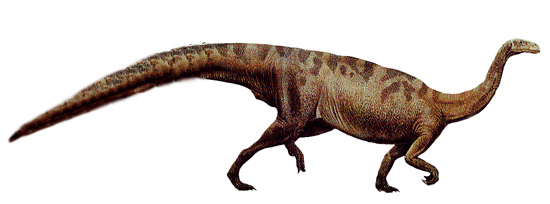
During the Age of Dinosaurs, the weather was consistently humid and wet, with lush vegetation and swamps spreading over the Pangean supercontinent.
Since dinosaurs did not have to worry about utilizing energy for staying warm, paleontologists believe that dinosaurs used this extra energy for growing purposes.
Other Fascinating Dinosaur Facts
The preoccupation with dinosaurs is not surprising considering the interesting facts about them, such as:
• Sauropods were also the least intelligent of dinosaurs, with brains smaller than walnuts.
• Most dinosaurs walked upright because it allowed them to breathe more easily in the humid, tropical climate of the Jurassic and Cretaceous Periods.
• Dinosaurs begin appearing in the fossil record about 230 million years ago following an earlier extinction event called the Permian-Triassic extinction, in which nearly 95 percent of all life existing at that time perished.
• Birds and dinosaurs are considered Archosaurs. Modern crocodiles are also in the Archosaur family.
• The majority of fossilized dinosaur eggs found are about the size of a football.
• A dinosaur called Lesothosaurus is the smallest dinosaur ever discovered. It was about the size of a chicken.
• While dinosaurs were not the smartest creatures and relied on brute strength and their massive size to survive, a dinosaur called Trooden is thought to have been intelligent, with a brain size similar to that of a modern-day bird.
• The fastest dinosaur, according to the most recent dinosaur facts update, is an ostrich-like reptile called Compsognathus that could run close to 40-miles an hour.
• Madagascar is home to the oldest known dinosaur fossils estimated to be around 230 million years old.
• As of today, paleontologists have classified about 700 different dinosaur species, with new species being discovered every year.
• Dinosaurs are thought to have had life spans of 75 to 300 years.
Dinosaur Facts about Extinction
Although we know quite a bit about dinosaur history, the question of why dinosaurs went extinct at the end of the Cretaceous Period remains somewhat of a mystery.
With the numerous facts we have concerning how dinosaurs lived, what they ate and the conducive nature of the environment in which they seemed to flourish, the idea that these imposing animals were driven to extinction by other animals seems preposterous.
A theory that is the most plausible of why dinosaurs went extinct involve speculation about a large asteroid smashing into the Earth about 65 million years ago, causing such abrupt and disastrous changes in the climate that dinosaurs, as well as other creatures, did not survive.
The sudden and dramatic decrease in sunlight from the tremendous
amounts of ash and dust thickening the atmosphere resulted in the
inability for plants to engage in photosynthesis.
Without enough
plants to eat, many animals died out. Without a sufficient food
supply for smaller animals to eat, dinosaurs eventually died out as
well, unable to adapt to a cooler, drier climate with the massive
loss of plant and animal food sources.
Modern Day Dinosaurs
When you look at a bird, you are essentially looking at an ancestor
of the dinosaurs that began evolving during the Mesozoic Era.
Unbelievably, birds and dinosaurs share many of the same skeletal
and anatomical features. In addition, more than 15 flying dinosaur
species have been unearthed with imprints of feathers clearly
visible on sedimentary rock.
Birds and reptiles both have scales covering their feet, as well as
possessing similar respiratory systems. Lungs containing pulmonary
air sacs permitted dinosaurs to force air in and out of their lungs
twice instead of once as practiced in mammals.
Present-day birds
exhibit this trait as well.
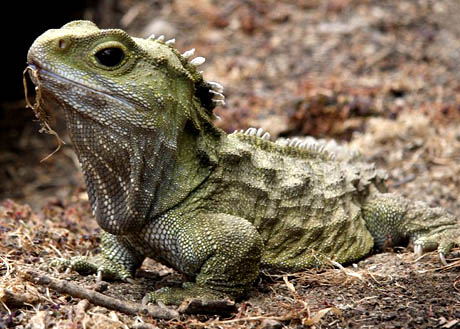
Crocodiles, Alligators and Dinosaurs
Although not technically related to the dinosaurs, crocodiles and
alligators represent reptiles that have remained relatively
unchanged from the way their Cretaceous period ancestors appeared.
Apart from being slightly larger than today's reptiles, ancient
crocs and gators took to the waters when the Earth experienced its
tropical phase and dined on smaller, chicken-sized dinosaurs that
happened to venture too close to the edge of a large lake or swamp.
Because they are so well adapted to their environment, both then and now, crocodiles and alligators were able to survive the Cretaceous-Tertiary Event, watching from just beneath the waters of ancient lakes and rivers as the dinosaurs quickly vanished from the face of the Earth.
Dinosaurs in Films
Filmmakers began making movies with dinosaurs as the main character as early as the 1900s.
An animated short film called Gertie the
Dinosaur was released in 1914 and featured a cartoon
brontosaurus-type dinosaur named Gertie.
Because this animated
motion picture was produced before the invention of cartoon cels,
the animator had to actually draw thousands of frames of the movie
on pieces of rice paper, and then attach them together to generate
an animated dinosaur.
Rarely did filmmakers rely on dinosaur facts when making their films. In the famous 1933 film, King Kong, dinosaurs and other prehistoric creatures are seen fighting one another on Skull Island where Kong also lives.
Beginning in the 1950s, dinosaurs began appearing in all kinds of
horror movies, such as The Beast ,
Fathoms (1953) and the
original Japanese made Godzilla, released in 1954.
Although Godzilla resembles a T rex dinosaur, it is actually some kind of monster that
has suffered nuclear radiation mutations. Extremely popular in Japan
as well as the United States, Godzilla went on to make dozens of
other films for the next five decades.
Of course, the most famous movie presenting dinosaurs as the main
attraction is the 1993 film Jurassic Park, in which a billionaire
philanthropist and several scientists have established an amusement
park island teeming with cloned dinosaurs.
Although noted
paleontologists were consulted during the making of the film, the
movie does sometimes stray from established dinosaur facts.
You might also want to visit the other page about dinosaurs on this website, Dinosaur Clipart, and the page with coloring pages with dinosaurs, Dinosaur Coloring Pages.
Dinosaurs and People
Because of substantiated dinosaur facts, we all know that humans and
dinosaurs did not co-exist but to add campy excitement to a film
about the supposed lives of early "cave" men, the producers of
One
Million Years B.C. (1966) placed stop-motion dinosaurs side-by-side
with people wearing animal skins and ineffectually throwing spears
at them.
One scene has a Pteranoden a flying dinosaur snatching a
woman from the ground and later dropping her into the ocean.
Another
shows an Allosaurus attacking children who are playing in a tree.
Paleontologists and evolutionary biologists have often speculated
about development of dinosaur history and what the world would be
like today if an asteroid did not wipe out the dinosaurs.
It was
because of the extinction event that mammals flourished without fear
of being eaten by dinosaurs. These early mammals eventually gave
rise to both human and non-human primates.
If dinosaurs had continued to flourish, theories regarding the end product of such an occurrence, range from the dinosaurs evolving into intelligent and possibly sentient creatures to humans emerging later in evolutionary history.
When investigating the comprehensive knowledge we have regarding dinosaur facts about their survival abilities, it is entirely possible that the world of today would be nothing like it is if dinosaurs had not experienced an extinction event.
Fictional Dinosaurs
The fictional characters created to entertain children and the young at heart do delight the audience but they are not based on dinosaur facts. These beloved dinosaurs include:
• Barney the purple dinosaur became the favorite of preschoolers in
the 1990s when he starred in his own show Barney and Friends.
•
The popular cartoon about a stone-age family called The Flintstones
featured a pet dinosaur named Dino.
• Imported from Japan in the
early 1990s, Mario's dinosaur friend Yoshi accompanied him in many
Nintendo video game adventures, eventually starring in his own games Yoshi's Island and
Yoshi's Story.
• The Beanie Baby series of
dolls featured four dinosaurs named Enigma, Swooper, Bronty and
Hornsly.
• Published in 1987, the book We're Back! A Dinosaur's
Story, involves the adventures of a T rex dinosaur called Rex and
his friends.
This book was later made into a popular film by Steven
Spielberg's animation studio in 1993 under the same name.
We Love Dinosaurs
People love learning dinosaur facts as well as dinosaur history about the different types of dinosaurs that lumbered over the earth so many millions of years ago.
They also love laughing at dinosaur jokes such as these:
Joe: I keep seeing Stegosauruses with orange polka dots.
Mike:
Have you seen an eye doctor yet?
Joe: No, I just keep seeing
Stegosauruses with orange polka dots.
*******************
What is three meters high and jumps every ten seconds?
A
dinosaur with the hiccups!
********************
A Joke about the Intelligence of Dinosaurs
It is one of the most well-known dinosaur facts that these creatures were not too bright:
Three dinosaurs were stranded on a desert island. One day they found a bottle floating in the water and opened the bottle. A genie popped out and said he would grant them each one wish.
The first dinosaur said he would love to leave the island and go
back to the jungle. Poof! He was gone.
The second dinosaur said he
would also love to leave the island and go back to living in the
jungle. Poof!
He instantly vanished as well. The third dinosaur
looked around for a moment, sighed and said, "Gee, I'm already
lonely without my friends. I wish they were back with me!"
*******************
Loch Ness Monster--Modern Day Dinosaur or Hoax?
First spotted and photographed in the early 1930s, the Loch Ness monster, or "Nessie" for short, continues to titillate the curiosity of both scientists and laymen.
Thought to be a Plesiosaur-like creature
living in the depths of Loch Ness, Nessie's existence remains
inconclusive due to ambiguous photographs and anecdotal descriptions
of numerous sightings. Scientists have attributed sightings of
Nessie to being that of a giant eel or simply misidentification of
floating debris.
Many expeditions have been made to explore the dark
depths of Loch Ness but so far, no one has presented any firm proof
regarding the existence of Nessie.
People are fascinated by the past existence of dinosaurs and
intriguing dinosaur facts simply because no other creatures like
them exist on Earth and probably never will again.
While the blue
whale remains as the largest animal ever to live on this planet, its
hidden ocean realm prevents us from viewing it as we would view
elephants or giraffes.
Our fascination with dinosaur history and
types of dinosaurs that once shook the ground as they lumbered over
the continents on which we walk today will no doubt continue to
captivate our sense of awe and wonder.
You can find more dinosaur facts on the following websites:
https://en.wikipedia.org/wiki/Dinosaur
Where Would You Like To Go Next?
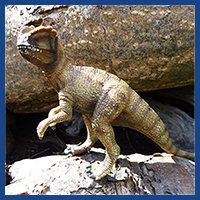 |
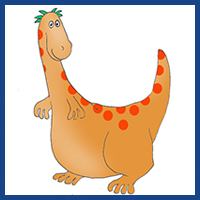 |
| Dinosaur Pictures: Lots of photos of dinosaurs in the nature. | Dinosaur Clipart: Funy, some realistic, some just great - lots of dino clipart. |
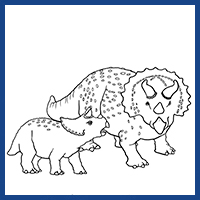 |
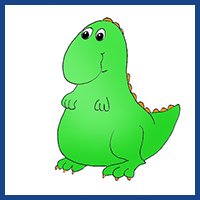 |
| Dinosaur Coloring Pages: I am sure you will find one or more coloring pages here that you will love. | Kids Birthday Party Ideas: Find some great ideas for your next dino party! |
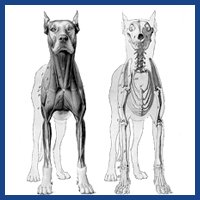 |
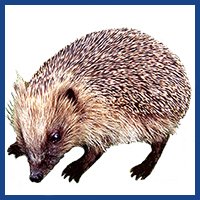 |
| Animal Facts: The main page for all the pages here with animal facts, with an overview. | Animal Clipart: The main page with an overview of all the pages here on Clipartqueen with animal clipart. |

Back to the top of this page about Dinosaur Facts, Types of Dinosaurs
Visit Homepage





